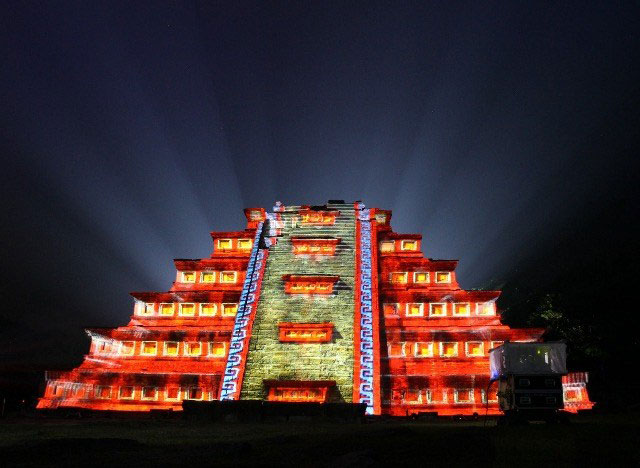
SHSAT Questions of the Week #9:
- 5 Conversion/Scale Problems
- 12 minutes
- Multiple choice
Related SHSATACADEMY Lessons:
Enroll in Question of the Week Tutoring:
- 1 hour online reviews of the question of the week problem topics with tutors
- Thursday 7PM & Sunday 7PM
- $12.50 each week (premium subscribers only)
PASSAGES

Chronology studies at Tajín and nearby sites show that the area has been occupied at least since 5600 B.C. and show how nomadic hunters and gatherers eventually became sedentary farmers, building more complex societies prior to the rise of the city of El Tajin. The pace of this societal progression became more rapid with the rise of the neighboring Olmec civilization around 1150 B.C., although the Olmecs were never here
10
in great numbers. It is unclear who built the city. Some argue in favor of the Totonacs and the Xapaneca; however, there is a significant amount of evidence that the area was populated by the Huastec at the time the settlement was founded. In the 1st century monumental construction started and by 600 A.D., El Tajín was a city. The rapid rise of Tajin was due to its strategic position along the old Mesoamerican trade
20
routes. It controlled the flow of commodities, both exports such as vanilla and imports from other locations in what is now Mexico and Central America.
From 600 to 1200 A.D., El Tajín was a prosperous city that eventually controlled much of what is now modern Veracruz, Mexico. The city-state was highly centralized, with the city itself having more than fifty ethnicities living there. Most of
30
the population lived in the hills surrounding the main city, and the city obtained most of its foodstuffs from the Tecolutla, Nautla and Cazones areas. These fields not only produced staples such as corn and beans but luxury items such as cacao. The religion was based on the movements of the planets, the stars and the Sun and Moon, with the Mesoamerican ballgame and pulque having extremely
40
important parts.
This led to the building of many pyramids with temples and seventeen ballcourts, more than any other Mesoamerican site. The city began to have extensive influence starting around this time, which can be best seen at the neighboring site of Yohualichan, whose buildings show the kinds of niches that define El Tajin. Evidence of the city’s influence can be seen along the Veracruz
50
Gulf coast to the Maya region and into the high plateau of central Mexico.
At the end of the Classic period, El Tajín survived the widespread social collapse, migrations and destructions that forced the abandonment of many population centers at the end of this period. El Tajín reached its peak after the fall of Teotihuacan, and conserved many cultural traits inherited from that civilization. It reached its apogee
60
in the Epi-Classic (900-1100 A.D.) before suffering destruction by fire and the encroachment of the jungle. While the city had been completely covered by jungle from its demise until the 19th century, it is unlikely that knowledge of the place was completely lost to the native peoples. Archeological evidence shows that a village existed here at the time the Spanish arrived and the area has always been considered
70
sacred by the Totonacs. However, there are no records by any Europeans about the place prior to the late 18th century.
(1) Are you ready for your brain to hurt a little bit? (2) If you take a sphere and remove the core from it, you’re left with a shape called a napkin ring – because it looks like a napkin ring. (3) Suppose you first remove the core from a sphere the size of a basketball. (4) Next, suppose you core the earth itself (assuming it is a perfect sphere) to get a napkin ring of the same height. (5) Which napkin ring would have a greater volume? (6) Most students would immediately reply, “The napkin ring from the earth of course!” (7) The diameter of the earth is 12,472 km. (8) Surprisingly, they would not be correct. (9) The two napkins rings of vastly different diameters will have identical volumes.
(10) The mathematics behind the napkin ring problem depends on the Pythagorean Theorem and Cavalieri’s Principle. (11) In order to better understand Cavalieri’s Principle, imagine a vertical stack of 5 quarters and shift the stack to the right until the shape looks slanted. (12) Despite the skew, the stack still has the same height, and every cross section is the same circular quarter. (13) Most importantly, it has the same volume of exactly 5 quarters which has not changed. (14) When computing the cross-sectional area of any napkin ring, the outer and inner circle areas are subtracted and the radius term drops out in the process. (15) The cross-sectional area is the same as that of a sphere of radius h. (16) Also, the volume is the same as that of a sphere of radius h; 4/3πh3. (17) The result seems counterintuitive. (18) Whether the napkin ring of height h is carved from the entire earth or a basketball size sphere, the volume will be the same.
